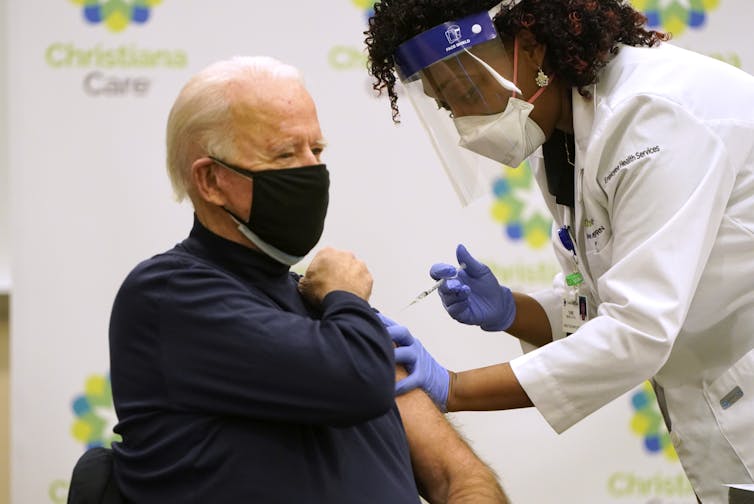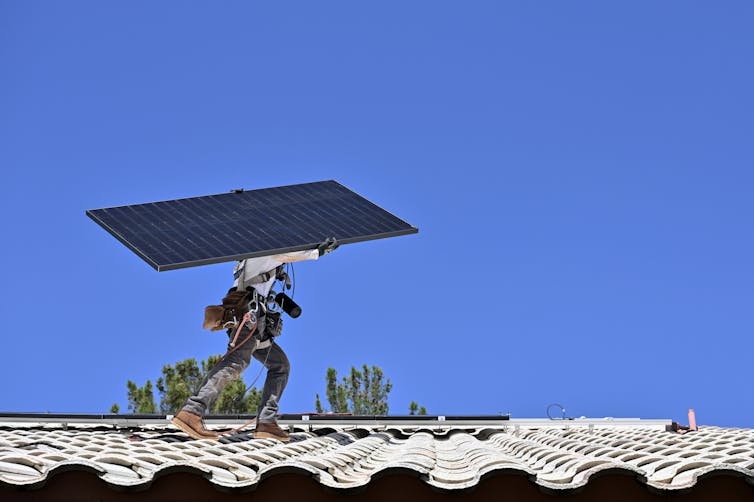In evaluating the outgoing Biden administration, much news has focused on inflation, immigration or Hunter’s laptop. But as an expert on national competitiveness in science and technology, I have a somewhat different emphasis. My research shows that U.S. prosperity and security depend heavily on the country’s ability to produce cutting-edge science and tech.
So, how did the Biden administration perform along these lines?
Advancing pandemic science and tech
President Joe Biden’s immediate challenge after inauguration was to end the COVID-19 pandemic and then shift the economy back to normal operations.
First, he threw the weight of his administration behind vaccine production and distribution. Thanks to President Donald Trump’s Operation Warp Speed, inoculations had begun mid-December 2020. But there had been no national rollout, and no plans existed for one. When Biden took office, only about 5% of Americans had been vaccinated.

Biden set an example by getting his own COVID-19 vaccinations.
Joshua Roberts via Getty Images
The Biden administration collaborated with private retail chains to build up cold storage and distribution capacity. To ensure adequate vaccine supply, Biden worked to support the major pharmaceutical manufacturers. And throughout, Biden conducted a public relations campaign to inform, educate and motivate Americans to get vaccinated.
Within the first 10 weeks of Biden’s presidency, one-third of the U.S. population had received at least one dose, half by the end of May, and over 70% by year’s end. And as Americans got vaccinated, travel bans were lifted, schools came back into session, and business gradually returned to normal.
A later study found that Biden’s vaccination program prevented more than 3.2 million American deaths and 18.5 million hospitalizations, and saved US$1.15 trillion in medical costs and lost economic output.
In the wake of the economic distress caused by the COVID-19 pandemic, Biden signed two bills with direct and widespread impacts on science and technology. Previous administrations had promised infrastructure investments, but Biden delivered. The Infrastructure Investment and Jobs Act, passed with bipartisan support during late 2021, provided $1.2 trillion for infrastructure of all types.
Rather than just rebuilding, the act prioritized technological upgrades: clean water, clean energy, rural high-speed internet, modernization of public transit and airports, and electric grid reliability.

Clean energy technologies, including solar panels, got a boost from the Inflation Reduction Act.
David Becker/The Washington Post via Getty Images
In August 2022, Biden signed the Inflation Reduction Act, totaling $739 billion in tax credits and direct expenditures. This was the largest climate change legislation in U.S. history. It implemented a vast panoply of subsidies and incentives to develop and…



